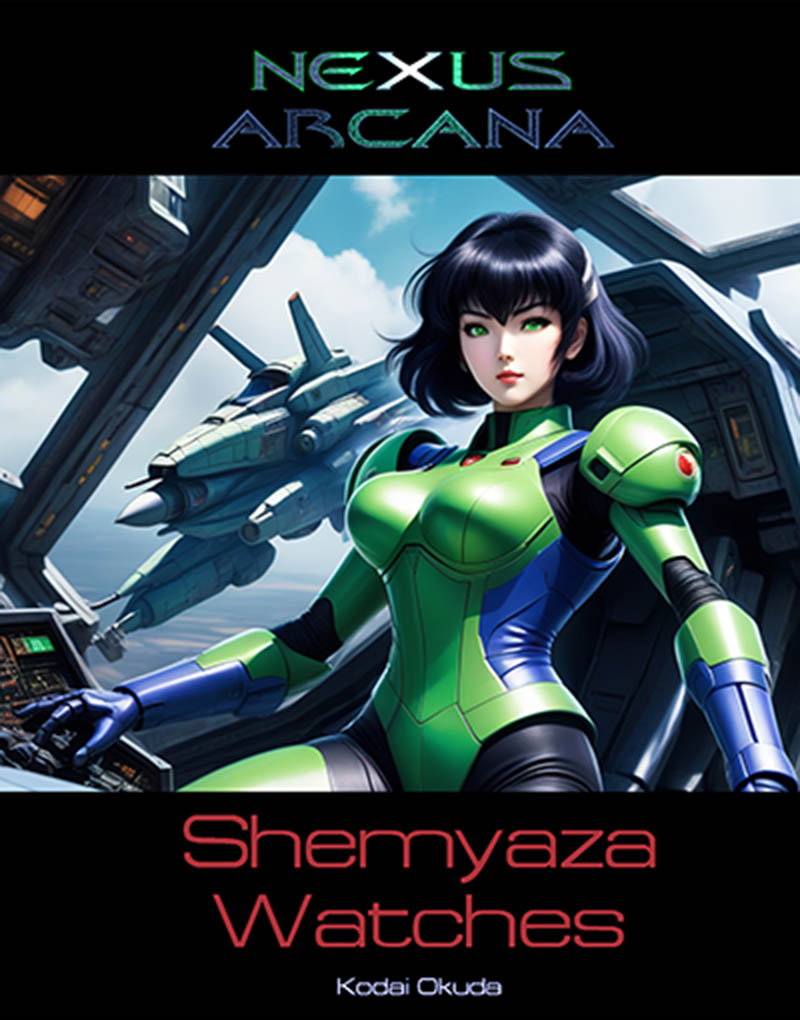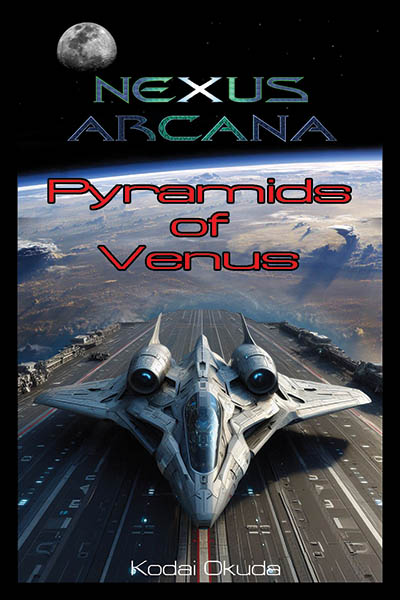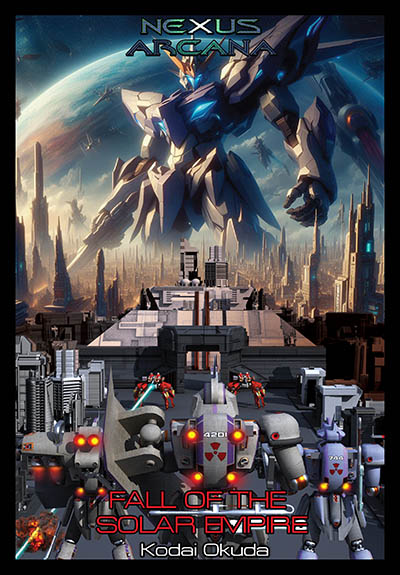Jhararo's All the Galaxy's Warships Vol. 7: Spacecraft Design Concepts (part 4)
by , 09-17-2012 at 01:22 AM (70765 Views)
Welcome to the July issue of Jhararo's All the Galaxy's Warships, the digital database dedicated to the study of mechanical devices, weapons, vehicles, and other machines of the known galactic nations.
This Month's Issue: PART 4 Ceres Regency "Flash Gordon" type spacecraft design concepts of the 1st Interplanetary War era.
* * *
INTRODUCTION TO PART 4
When the conspirators within the UN Solar Empire set out to build their new society, they knew that a fleet of warships capable of contending with anything that either the UNSC or the USSN was constructing during the 2060s would be an absolute necessity. It was from this requirement that the shipwrights of the conspirators set out to design and construct what would become the Ceres Regency's space navy.
The designers of the Regency's spacecraft were determined to deviate completely from the UN's Alternative 3 Project space shuttle designs of the 2040s. Spacecraft built in anticipation of war with the Solid State Society were of no use to the conspirators' desire to fight a post-Great War conflict. They needed a fleet that would facilitate the transfer of power quickly and effectively if their coup de tat was to be successful.
They needed craft that were large enough to accommodate legions of battlerobots, while also having both anti-mecha weaponry to defeat UN shuttle craft and spacefighters, and capital ship armaments with enough punch to destroy the UNSC larger craft with ease.
From these requirements came the "Flash Gordon" spacecraft type.
* * *
From the Boikii to Richtoven
The introduction of the Boikii class of destroyer by Admiral Kolchak's Venus fleet in 2061 spurred the design team of the conspirators towards a fleet of craft loosely based on that class of vessels. The success of the USSN Saturn Class heavy frigate over the UNSC Boikii ships further influenced the conspirators towards a cylindrical hull as it proved to be superior to that of the blocky UN destroyer design when in an atmosphere. The group wanted to be sure that the destroyer fleet they were building would overwhelm both the UN and the USSN fleets rapidly, thus they incorporated the latest beam weapon, engine, armor, and defensive systems of the time (2065 AD).
This made the original 5000 ton destroyer model grow to 8000 tons displacement as more space was needed to accommodate the new system requirements.
The first examples of this new vessel were built in 2065-66 at the Hygeia shipyards of the UNSC without the knowledge of the Solar Empire high command.
The new family of ships was dubbed Richtoven Class and put into immediate mass production.
* * *
"Flash Gordon" flies again.
The Richtoven class was deemed adequate enough to contend with any escort ship that either the UNSC or USSN could muster. The next task was to create a larger, more powerful craft for use as a command and control vessel. Therefore, starting in 2065 the conspirators' ship development teams began designing a "pocket" battleship concept. The first dozen examples of this new concept craft were built in 2067 and tested using a pair of electromagnetic drives as their main engines. These were stripped off the x-ships for this new class in 2068 after the successful testing of the UN's Type-1 intersection drive unit. The handful of experimental craft were fitted with the new faster-than-light drives in late 2068 with two advanced FTL drive types developed simultaneously by UNOOSA. Six of the x-ships mounted Type-1 intersection drives, and six mounted 1st Generation stellar warp drive units. Neither engine met the expectations of what the conspirators were pushing for in the late 2060s. The discovery of the derelict alien fleet at Alpha Centauri had changed the course of the direction of their plans, and now they viewed FTL capable craft as a top priority. The "pocket" battleship design they had called for in 2065, was now relegated to the status of light cruiser, and demands for a marriage of the two FTL drive concepts became the main goal for the scientists working with them.
From this push by the conspirators the Type-2 intersection drive system was born in late 2068 AD. Immediately, six of the new "pocket" battleships were fitted with a parallel pair of these engines and testing began. The dual drive design was worked out by modifying the "Dr. Xuric" configuration of the Richtoven.
From this design concept the Admiral Graf Spee class was born. Mass production was started as soon as the conspirators gave the green light for the design.
When the first few squadrons of what would become the Ceres space navy were seen by Hygeia Base Commander Peter Khrushchev, he was reported to have remarked: "All glass nose, a cylindrical body, and stabilizer fins, my goodness, Flash Gordon flies again." It is from his thought spoken aloud to the craft's design team that this ship type gets its name.
* * *
The "Flash Gordon" type distinguishes itself from other types
With the outbreak of the 1st Interplanetary War in 2070 AD, the conspirators got their first glimpse at what the Earth Federal SpaceNavy was capable of. This sent alarm bells ringing through their ranks as they realized that the "Flash Gordon" types of warships they were building were now wholly inadequate against the might of the EFR. In addition to this, the alien threat had already sparked the start of the development of the Scharnhorst class, but the conspirators wanted ships much larger than the 35,000 ton battlecruiser. Having seen the size and scale of the alien ships, they realized that if the Prodono were still lurking out in the galaxy that any confrontation with them would be totally one-sided in the alien's favor if their space fleet could not meet it with equal force.
From these two threats came a new list of requirements that influenced the design of all "Flash Gordon" style warships from Scharnhorst onwards until the type fell out of favor.
These requirements were for both broadside guns and turret weapons useful against craft under the 30,000 ton limit set by the conspirators as they did not think any Earth power would be able to construct warships larger than that for some time (they projected it would not be until the mid-22nd century). Large scale, nuclear tipped, missile launchers and heavy energy shield generators were to be mounted for use against any alien threat that might present itself. Escape pods were mounted in order to preserve the crew as best they could due to the fact that any alien threat would in all likelihood have numerical superiority. No other stellar nation in the Sol system during the 1st Interplanetary War followed this design path, and thus the Ceres Regency vessels were unique in this combination of weapons, defenses, and overall projected intention of their design.
* * *
Conclusion of Part 4
The "Flash Gordon" type of warship pushed the envelope of what was possible with the Type-2 intersection drive and converging beam weapon technology. By using numerous small-power turreted beam weapons strategically placed throughout the hull of a warship, instead of the standard dorsal and ventral emplacements, the Ceres Regency solved the problem of both anti-mecha and close/medium range combat with large spacecraft. This was a direct application of Prodono battle doctrine into existing Earth-based technologies. For the most part, the "Flash Gordon" type of warship was a success for the middle 21th century. However, by the time the 1st Interplanetary War ended the weaknesses of the spacecraft type was rapidly becoming apparent. This was especially true during the last battles of the Ceres Conflict in 2084 AD. The Jovian, Colonial Confederacy, and USR warships outclassed even the largest "Flash Gordon" style warships.
The esthetic of this type of craft did persist with designs far into 22nd century Terran designs, but those designs were part of the amalgamation of Earth type craft that emerged from the planetary era as a whole.







 Email Blog Entry
Email Blog Entry

